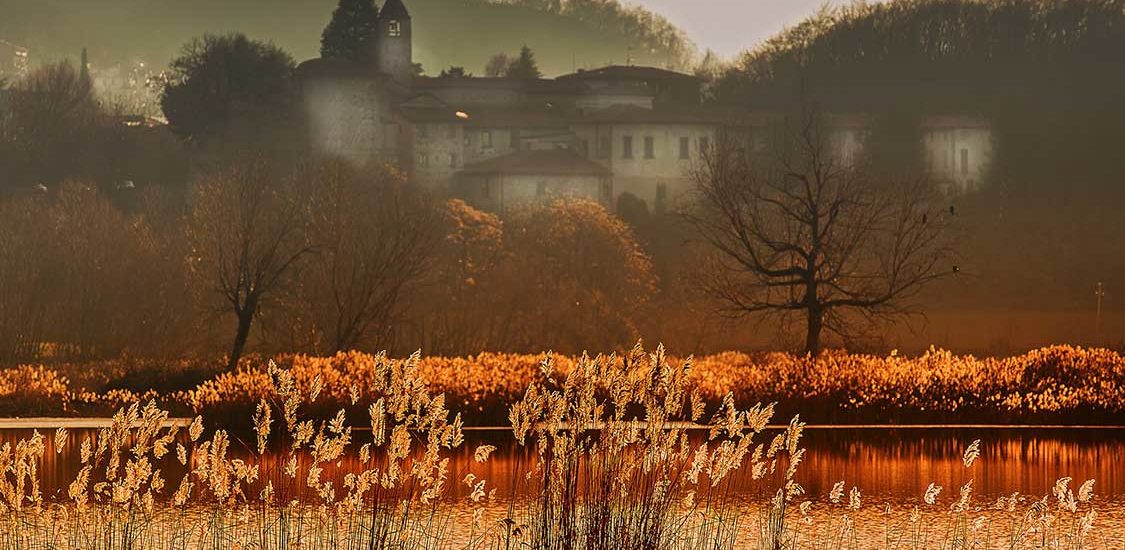Prehistory and History
Prehistoric humans first appeared in the Sebino area in the Quaternary Period, more precisely the Mesolithic, about 9000 years ago. At the time, prehistoric humans were strongly attracted to the glacier-polished rocks emerging from the northern part of the lake and in Val Camonica. Between the 9000 and 7000 BC, they began to tell stories by carving thousands of figures on the rocks. The oldest human remains also date to the same period. These were found near the peat bogs in the hamlet of Cerreto, which probably served as a temporary settlement for hunting and fishing.
During peat extraction, numerous finds dating to the Bronze Age — about 4000 years ago — were discovered, suggesting the presence of at least two pile-dwelling villages near the peat bogs. Unfortunately, the remains of these villages were destroyed by the peat extraction and those that were removed have mostly been lost, with only a few preserved in Rome at the Pigorini National Museum.
During the Roman Empire, in the second century AD, the marshes that occupied the area of today’s peat bogs began to fill with silt, and peat started to form at the bottom. The location of the monastery was occupied by a Roman temple dedicated to the god Mithras, who was worshipped between the first century BC and the second century AD.
In the Middle Ages, probably before 1000 AD, the initial core of the Monastery of San Pietro in Lamosa was built. Various extensions and decorations added between 1100 and 1500 led to its current appearance. A document from 1083 attests to the donation of the monastic complex to the French monks of Cluny, who had a large following in Italy and Lombardy at the time.
In the 1700s, the ancient lake that had formed in the prehistoric era completely silted up. The stagnant water and low oxygen in the marsh prevented the complete decomposition of plant matter, which accumulated on the bottom of the basin. At the end of the 1700s, the naturalist Cristoforo Pilati from Brescia wrote the following about the fields adjacent to the monastery: ‘… these fields produce poor grass, which, whether green or dry, serves to thin rather than fatten cattle.’ It was already known at the time that peat could be found by digging under the surface layer of the meadows. This dark, water-impregnated compound rich in organic matter becomes an excellent fuel when dried.



Peat Extraction
In the second half of the 1800s, intensive peat excavation began when Società Italiana Torbe of Turin bought most of the land. The peat was extracted manually using a sharp implement called a ‘luccio’: a rectangular cage-shaped tool about 90 cm long mounted on a 4–5 metre long handle. This was used to extract blocks of peat about 15 cm on a side, which were then cut into pieces and dried in the sun. Peat excavation mainly involved local labour and the peat significantly favoured regional economic development due to its use in numerous industrial sectors that relied on steam engines: spinning mills and furnaces, factories, and trains on the Brescia-Iseo-Edolo route. The use of peat ceased completely in the 1950s, when the peat bog, formerly a grassy meadow, became the flooded ‘lame’, radically changing the landscape and ecology.


